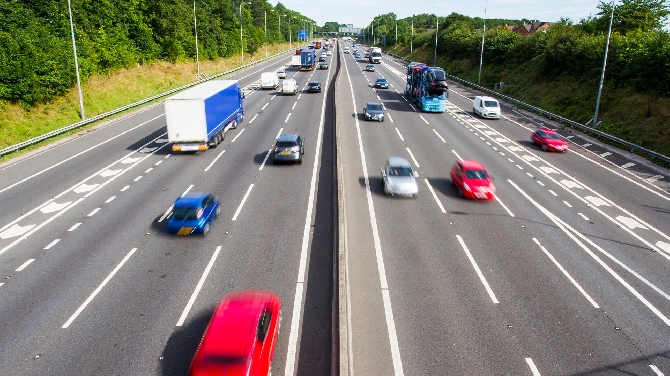Running a small transportation company isn’t easy. Between managing costs, planning routes, tracking shipments and providing reliable service, there’s a lot to juggle. But new technologies are making it easier than ever for small businesses to enhance efficiency, reduce expenses and exceed customer expectations.
Solutions like route optimization software, telematics systems and digital freight platforms can provide real benefits if implemented thoughtfully. The key is taking it step-by-step – assessing costs, training staff, starting small with pilots, and analyzing performance data. It takes strategy, but with the right approach, small commercial transport companies can leverage technology to transform their operations. The future looks bright for nimble small businesses ready to embrace innovation.
Challenges Small Businesses Face in Managing Transportation
Delivering goods is an expensive endeavor for small transportation companies. Major costs include fuel, vehicle maintenance, insurance, technology, and labor. Different types of vans have pros and cons such as running costs. Monitoring drivers, tracking shipments, and managing compliance with regulations also drain limited resources.
With small fleets, it can be difficult to optimize routes and achieve economies of scale. Customer expectations for fast, on-time delivery put pressure on small businesses to provide reliable service despite their constraints. And a lack of robust tracking systems leads to errors like missed or incorrect deliveries that frustrate customers.
These challenges make it hard for small transportation businesses to compete on price with larger rivals who have greater resources. They need to find ways to enhance efficiency and service without increasing expenses.
Emerging Transportation Technologies for Small Businesses
New technologies are making it possible for small transportation businesses to overcome many of these obstacles.
Route Optimization Software
Route optimization software analyzes delivery addresses, traffic patterns, vehicle capacity, and other variables to determine the most efficient routes. It reduces unnecessary mileage so drivers make fewer trips and save on fuel.
By planning optimized routes in advance, small businesses can transport more goods in less time. Route optimization provides a competitive advantage for winning new delivery contracts. It also allows dynamic adjustments to account for changing conditions like weather or traffic.
Telematics Systems
Installing telematics systems in vehicles provides real-time tracking through GPS and sensors. Telematics monitor driver behavior like speeding or hard braking to improve safety. The systems provide updated ETAs for customers and send alerts if deliveries will be delayed.
Telematics data helps managers understand deficiencies and make decisions to enhance reliability. Tracking shipments in real-time also reduces missed or incorrect deliveries by confirming goods reach the right location.
Digital Freight Platforms
Online freight platforms match companies needing goods shipped with carriers that have available capacity. They provide on-demand access to a network of transportation providers.
Digital freight platforms automate pricing, booking, tracking, and billing. The technology allows small businesses flexibility to scale up or down as needed. Working with multiple carriers on a platform provides more delivery options without the need to own more vehicles.
Key Factors in Implementing New Transportation Technology
While route optimization software, telematics systems, and digital freight platforms offer many benefits, integrating them requires careful planning and execution.
Assessing Costs and ROI
The software, hardware, and employee training required to implement new transportation technology represent major investments for small businesses. Prior to adoption, they must analyze anticipated expenses and projected ROI to build a budget.
It’s also essential to account for ongoing costs of data plans, maintenance, and software subscriptions. Comparing potential savings in fuel, labor, and liability against costs helps determine the payback period.
Integrating with Existing Systems
Before rolling out new technology, small businesses must ensure compatibility with their existing IT infrastructure. Vehicle telematics systems may require installing new terminals and modifying back office software.
Route planning and digital freight platforms should integrate smoothly with a company’s TMS (transportation management system) and other dispatching technology. Identifying integration issues proactively prevents problems down the road.
Adoption and Training
Gaining employee adoption is crucial when implementing transportation technology. Drivers and dispatchers may resist changes to their workflows. Providing proper training helps workers understand the benefits of telematics devices, route optimization, and other solutions.
Managers should clearly communicate how new technology improves efficiency, safety, and customer service. Hands-on training builds worker capability and engagement in the change process.
Starting Small
Tackling a company-wide technology implementation all at once carries substantial risk. Beginning with a small pilot project provides the opportunity to work out any issues on a limited scale first.
For example, initially equipping a few vehicles with telematics allows monitoring for optimal setup before deploying across the entire fleet. Taking an incremental approach reduces disruption while laying the foundation for a smooth full-scale rollout.
Data Analysis
Monitoring key metrics before and after deploying new transportation technology is essential. Small businesses should track costs, fuel consumption, mileage, emissions, on-time deliveries, and driver violations.
Analyzing performance benchmarks identifies opportunities for further optimization. Data transparency provides clarity on the business impact of technology investments. This helps guide decisions on broader adoption.
Case Studies of Successful Implementations
Looking at how other small transportation companies have successfully adopted new technology can provide some useful roadmaps.
ABC Trucking, for example, is a 25-truck carrier serving the construction biz. Spiraling fuel and labor costs from inefficient routes and dispatching were killing them. But after implementing route optimization software, ABC saw weekly miles driven plummet. They completed all scheduled deliveries on time while fuel spending dropped. Drivers were happier and profits climbed.
Meanwhile, DEF Delivery makes last-mile retail deliveries in a big city. They struggled to track drivers and shipments in real-time, leading to errors and delays. But a basic telematics system with GPS gave dispatchers and customers shipment visibility. DEF reduced mistakes while boosting on-time performance. Claims for lost and damaged goods also fell after gaining item tracking.
The key takeaway? With careful planning and data-driven technology choices, small fleets can gain efficiency, improve service and boost the bottom line.
Overcoming Resistance to Change
Implementing new technology inevitably causes some resistance among employees who are set in their ways. Drivers may see telematics tracking as an invasion of privacy or lack trust in computer-generated routes. Dispatchers may feel their experience is not valued by automation tools.
To overcome resistance, managers should promote open communication and transparency. Make clear how new solutions benefit workers by reducing stress and driving more safely. Empower staff to provide input and highlight successes. One option is to offer rewards when drivers follow optimized routes or meet safety goals recorded by telematics devices. Recognizing individual contributions builds team engagement.
Patience and a thoughtful approach ease concerns over job security or scrutiny. Combining technology with human expertise gets the best of both worlds – optimized processes aided by experience. Once workers experience benefits firsthand, resistance fades.
Maintenance and Repair Considerations
Adopting new vehicle technology impacts repair and maintenance procedures for transportation businesses. Telematics systems have diagnostic capabilities to detect engine issues and can notify mechanics proactively. However, specialized training may be required to service connected devices and fleet software.
More sensors and electronic components also increase potential failure points. Replacing and repairing telematics hardware adds expenses. Businesses should factor ongoing maintenance costs into ROI calculations and consider stocking spare parts to minimize vehicle downtime.
In addition, new products inevitably suffer from defects when first introduced. There may be software bugs and integration problems to resolve. Working closely with technology vendors to report issues accelerates fixes and improvements. Allowing ample time for pilots and phased rollouts prevents frustration.
Proactive communication with manufacturers builds mutually beneficial relationships. Transportation businesses gain a competitive edge by partnering with innovative solution providers.
Managing Compliance and Safety
Small fleets must navigate complex federal and state regulations governing items like driver qualifications, load limits, and hazardous materials. Technology systems provide tools to simplify managing compliance.
Telematics automatically log hours worked to ensure legal limits on service hours. Onboard displays remind drivers of weight restrictions based on real-time load sensor data. Route planning accounts for hazardous cargo exclusions like low bridges and tunnels.
Some solutions even automate filling out required logs and forms, ensuring accuracy and completeness. Making compliance management efficient lets small businesses avoid fines and focus on core operations.
Safety is also a top priority. Collision-avoidance systems alert drowsy drivers. Speed limiters reduce rollover risk. Driver scorecards identify training needs. Technology builds on human strengths rather than replacing them. Combining skilled professional drivers with advanced safety aids results in superior outcomes. Small fleets gain peace of mind knowing every delivery is secure, including those transporting passengers with prams by using helpful resources like Prampicks.
Evaluating Emerging Platforms and Companies
New transportation technology platforms and companies are constantly emerging. How should small businesses assess potential partners? Key criteria to evaluate include:
- Experience serving the transportation industry
- Integration with existing IT infrastructure
- Ability to customize to unique needs
- Employee training and support resources
- Financial stability and longevity
- Scalability for growth
- Cost transparency and flexibility
- Strong client references
- Proven ROI
Leading solutions move beyond a narrow focus and provide end-to-end capabilities. They open access to vast carrier networks while also optimizing internal fleet operations. Ongoing innovation through R&D investment and customer input is a positive sign.
Partnering with an established vendor helps mitigate risk. But being an early adopter of cutting-edge platforms also provides competitive advantage. Pilot programs let businesses test new solutions without long-term commitment.
By thoroughly vetting providers, small transportation fleets gain confidence investing in transformative technology. The future favors companies proactively embracing change.
In a Nutshell
Running a small transportation company is tough – costs keep rising while competition and customer demands intensify. It’s easy to feel overwhelmed. But don’t despair. New technologies like route optimization, telematics and digital freight platforms offer real solutions.
The key is integrating these innovations thoughtfully into your existing operations. Take time to thoroughly assess expenses, train staff, start with small pilots and monitor performance data closely. With careful planning and execution, powered by key benchmarks, small fleets can smoothly modernize.







